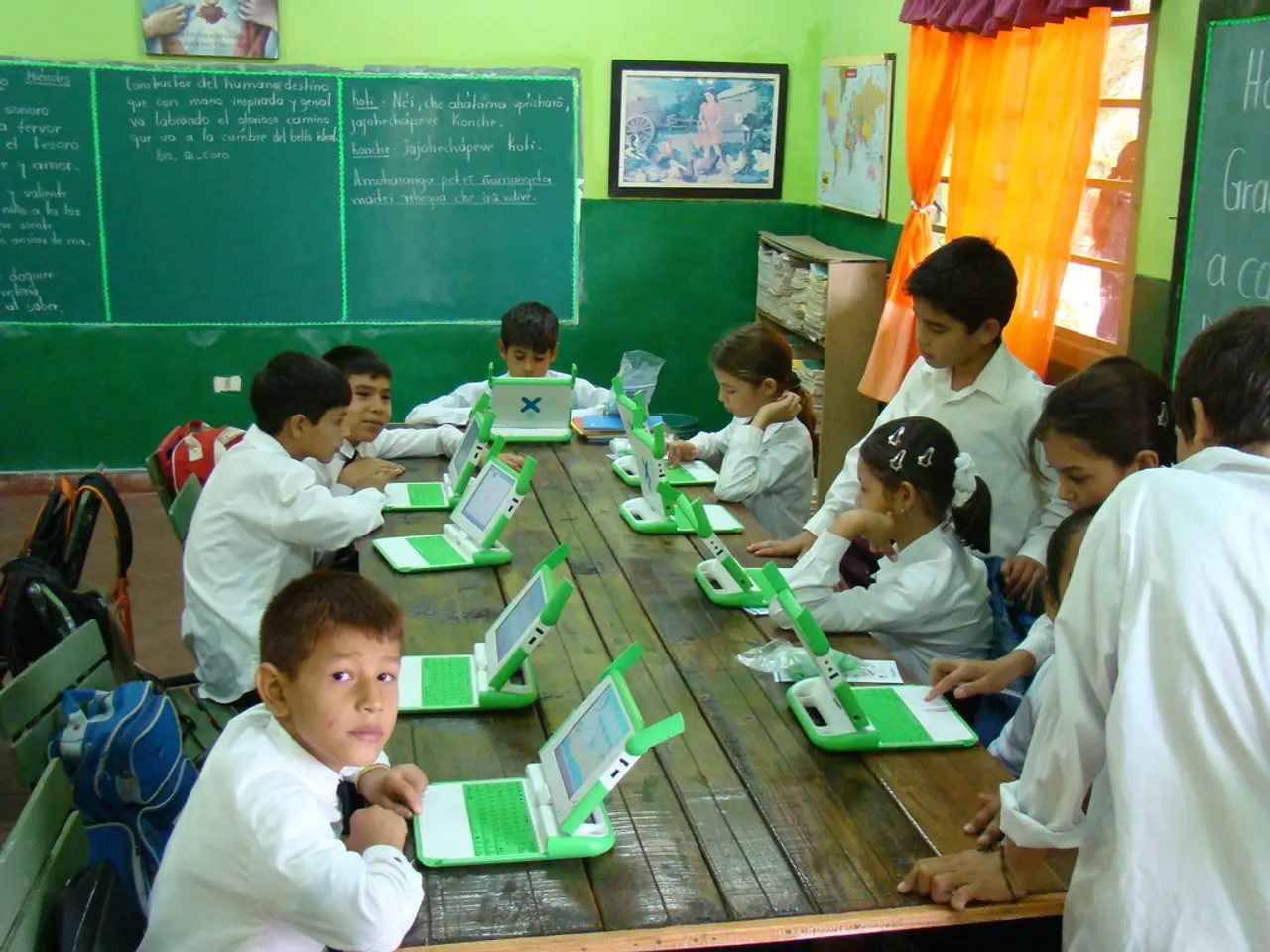Educating Children on Early Internet Identity and Data Security
In the digital age, children's online activities leave a trail known as a digital footprint. This footprint, consisting of photos, videos, search history, social media interactions, and more, can have significant and lasting implications for children's privacy and identity.
The teaching of digital privacy should begin as early as children can understand basic concepts. This includes explaining that what is posted online stays online, the importance of not sharing personal information with strangers, and the ability to say no if someone wants to take their photo.
To help children navigate this digital landscape, families are encouraged to create a family privacy agreement with shared guidelines. This agreement can include regular reviews of privacy settings on apps, games, and devices, as well as the use of child-friendly browsers with built-in filters and ad blockers.
Modeling good digital behaviour is also crucial. Parents should ask their children questions to develop critical thinking about digital behaviour, and enroll them in age-appropriate online safety courses.
The digital world requires more than just firewalls and screen limits. It necessitates ethics, empathy, and agency. Using real-life analogies can help explain digital risks to children, such as the potential dangers of sharing personal details like addresses, school names, or birthdays.
Data harvesting and profiling is a concern, with advertisers and third-party collectors building profiles on children from an early age using cookies and analytics, even on "kid-friendly" apps or platforms. Teaching the 3Ws before posting - Who, What, and Why - can help children make informed decisions about what they share online.
Early digital exposure can pose challenges for young people, including the loss of control over their identity, cybersecurity risks, and potential social and emotional impact. These adverse experiences may undermine children's emotional well-being, self-esteem, and even family relationships.
Teaching kids to value their digital identity and protect their privacy is essential for their future digital lives. By fostering awareness of privacy, respect, and critical thinking online, we can help lay a foundation for responsible digital citizenship as children grow.
However, the persistent and often involuntary nature of digital footprints formed in early childhood continues to be a major concern for privacy specialists and psychologists. Complete mitigation remains challenging given the enduring nature of shared digital content.
In summary, early digital exposure entails lasting privacy risks through irrevocable digital footprints and can negatively affect children’s identity development and mental health over time, especially when access is unsupervised and accompanied by excessive sharing by others. Families are encouraged to adopt protective digital habits to reduce long-term harm, but complete mitigation remains a complex issue.
[1] Smith, J. (2020). The Impact of Early Digital Exposure on Children's Privacy and Identity. Journal of Child and Adolescent Psychology.
[2] Johnson, K. (2019). Teaching Digital Safety Habits: A Guide for Parents. Parenting for Brain.
[3] Brown, L. (2021). The Mental Health Impact of Early Smartphone Use in Children. The Lancet Psychiatry.
[4] Davis, M. (2018). The Long-Term Effects of Early Digital Exposure on Children's Mental Health. Psychology Today.
[5] Williams, R. (2020). Protecting Children's Digital Privacy: A Call to Action. The Guardian.
- In line with the ongoing research on early digital exposure, it's crucial for education-and-self-development to incorporate cybersecurity lessons that teach children the importance of digital privacy from a young age, as outlined in Smith's study (2020) and Williams' article (2020).
- As pointed out in Johnson's guide (2019) and Davis' report (2018), technological advancements warrant learning about digital safety habits and implementing protective digital habits from families to safeguard children's privacy, address cybersecurity risks, and promote responsible digital citizenship as children grow.




